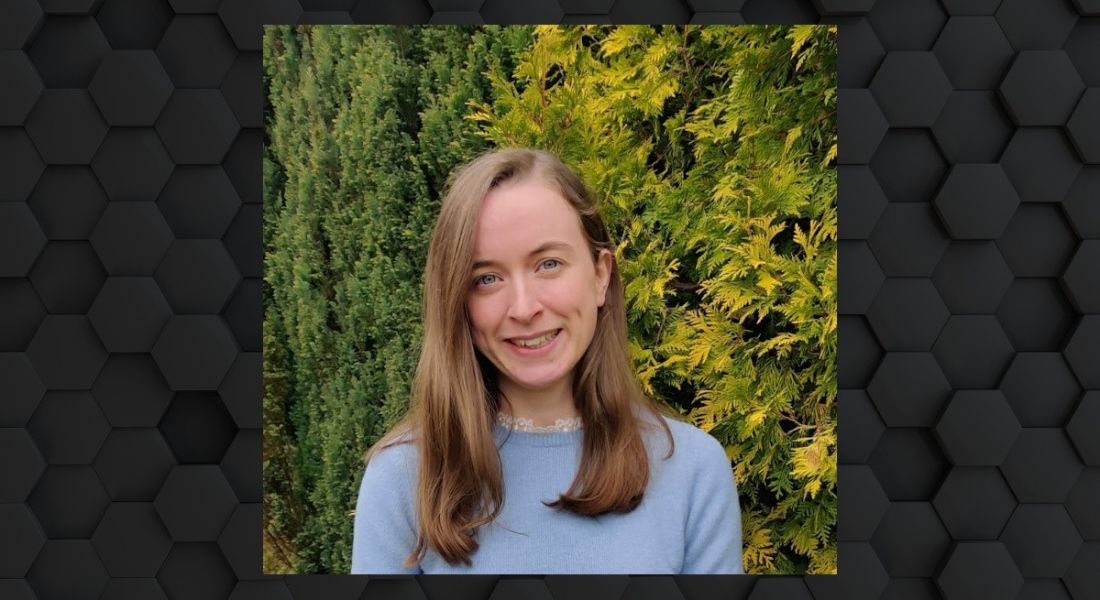PwC’s Íomar McManus explains how she has seen the data science landscape change and why creativity is an important part of her role.
Íomar McManus works as a data analytics consultant in PwC Ireland, having joined the data and analytics team through the company’s graduate programme more than three years ago.
She graduated with a degree in management science and information studies from Trinity College Dublin.
As well as data analytics, McManus also has a passion for sustainability and her goal is to combine these two areas and apply her skills to environmental, social and governance projects.
‘Knowing when to stop designing and developing is a skill in itself’
– ÍOMAR MCMANUS
If there is such a thing, can you describe a typical day in your job?
I spent the last three years working on transition programmes within a corporate bank in London as part of a small PwC data team.
Pre-pandemic, we would fly over to London early in the week for two or three days. The travel was tiring but also great fun as my colleagues were also my friends. We would work hard, going to a lot of client meetings but then treat ourselves with great dinners in the evenings.
Our working day would differ depending on what stage of the programme we were at. For example, at the beginning of a programme, our time would be spent investigating data sources and defining the data perimeter and scope (eg clients, accounts). This would mean long workshops with the client and talking to other data teams within the bank.
During the pandemic, we were working and communicating virtually with the client in London. Before logging on at 9am, I would get out for a quick 15 minutes to get some morning daylight.
At 9:30am, we had a daily stand-up meeting with our team lead and each of us would answer three questions: what we achieved yesterday, what we plan to achieve today and do we have any blockers.
We also often had a 5pm end-of-day informal team call where we each told our high and low of the day. It was a great way to close out the evening.
What types of data science projects do you work on?
I’ve been working on business intelligence (BI) projects since I started at PwC three and a half years ago.
During a college internship, I gained a lot of experience in data visualisation using Tableau, a popular BI tool. This made me a good fit for a role in the bank in London, which required Tableau visualisation skills.
I started off creating senior management MI [management information] for a Brexit transition programme. The client kept us on for two other major transition projects during which I broadened my experience into data management and data transformation.
I mostly enjoy the mid-stages of a project when we are translating the client’s requirements into an automated workflow and/or BI tool. It can be challenging to coordinate the work but it’s also fun to see the end-to-end workflow process come together.
What skills do you use on a daily basis?
I knew that I would require technical analytical skills in the role, but I didn’t expect to be told early on by my manager that “less is more”. This is something I struggled with as in college we were rewarded for perfecting projects.
The 80:20 rule, or the ‘pareto principle’ is a well-known consulting term and is very applicable to dashboard development. The rule states that 80pc of results comes from just 20pc of the effort.
In MI development, I could spend the majority of my time perfecting the aesthetics of a dashboard or trying to build a nice-to-have feature that in the end gets scrapped by the client.
Knowing when to stop designing and developing is a skill in itself. I learned that imperfect and quick releases greatly reduced wasted time and effort as it allows for near real-time stakeholder feedback.
What are the hardest parts of working in data science?
In my roles to date, I’ve found balancing stakeholder requirements to be the most challenging. It requires a lot of time and a depth of interpersonal skills to maintain stakeholder engagement.
As the central data team, we had to balance the reporting requirements from a range of operational and business teams while maintaining a consistent and single ‘source of truth’.
If we failed to keep a stakeholder happy, they would create their own siloed KPIs and the programme wouldn’t be singing from the same hymn sheet.
Stakeholder engagement early on in the project is key to avoiding this. Furthermore, having a central landing page for Tableau dashboard links worked as a one-stop shop for stakeholders to find information and helped to avoid scope creep.
Do you have any productivity tips that help you through the day?
Starting and ending the day with team connection really helps me with motivation and staying focused. Knowing we are one team working towards a common goal sounds cliché but is something I’ve found to be true!
I do quite a bit of Python coding in my roles. When I’m stuck in a coding rabbit hole, I force myself to get up and take a break before digging myself deeper. It also helps to talk through the problem with a team member. Even if they can’t help fix it, it often gives more clarity to the problem.
Google Keep helps me to stay on top of my to-do list. The check boxes give a sense of satisfaction as I complete tasks. The team uses Jira to track stakeholder requirements and assign the underlying tasks.
What skills and tools are you using to communicate daily with your colleagues?
I mentioned the 15-minute agile scrum stand-ups in the morning. Often, these would run over as we got distracted discussing the latest Netflix docuseries.
During the pandemic, Google Chat and Meet made it really quick and easy to jump on video calls throughout the day. Often, I would send a video call within our Google group chat and whoever is free would jump on for a quick chat or brainstorming session.
How has this role changed as the data science sector has grown and evolved?
My role has consistently been BI throughout the three years. I’ve had to keep up with new BI tools that have become popular such as Microsoft Power BI.
The ETL (data extract, transform, load) tools are also constantly evolving. The client’s ETL tool we started off using has since been decommissioned in the bank. As our datasets were relatively small, we transitioned over to Python for pulling and transforming our data.
Cloud technology for data science and data analytics is hugely prevalent now. I actually just got my AWS practitioner certificate. It’s the first step toward my goal of becoming an AWS-certified data analytics specialist.
What do you enjoy most about working in data science?
Data drives decision making, which in turn drives transformation. It can be intimidating knowing that your analysis or KPIs are having such a high level of impact but it’s also extremely satisfying.
I also enjoy the initial stages of messing around and figuring out new datasets. It might not sound like it, but it takes a lot of creativity to go from a few data extracts to a set of KPIs on a dashboard.
What advice would you give to someone who wants to work in data science?
Data science and data analytics covers a wide range of sub-disciplines, so do your research into all of them and figure out what suits you best.
There are lots of online courses that can help you figure this out – Coursera, Udemy, UCD Academy to name a few platforms. You could also attend events hosted by the Analytics Institute to give you a feel for a particular subject.
Don’t miss out on the knowledge you need to succeed. Sign up for the Daily Brief, Silicon Republic’s digest of need-to-know sci-tech news.




